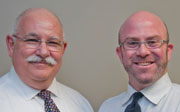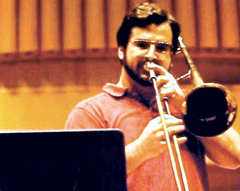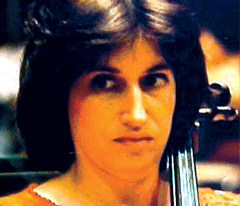 |
Nearly all of us were taught to view astigmatism as the result of some accidental, idiopathic misshaping of the cornea, and that two types of astigmatism exist: with- and against-the-rule. In the old days, we measured the corneal curvatures with keratometers and applied Javal’s rule to predict the amount of astigmatism present in the eye. If the astigmatic portion of the refraction was close to the Javal’s rule prediction, we knew that the astigmatism was due to the corneal curvature. If the astigmatic portion of the refraction didn’t match our Javal’s rule prediction, we knew the lens was the cause of the refractive error. Regardless, we knew that it should not change significantly over a person’s lifetime.
Overture
Then, along Elliott Forrest, OD, a professor at the State University of New York, College of Optometry with a model about eye scan, head scan, and posture and astigmatism. Dr. Harris first heard of Dr. Forrest’s model of astigmatism in the early 1980s and the significance of the information hit home almost immediately. Dr. Harris, a classically trained bass trombonist, came upon a way to test the theory. He knew first-hand that musicians must remain in constrained postures for extended periods of time to play their instruments. For example, we are all familiar with the head tilt left of the violinist or the head tilt right for those who play the flute. A trombone, particularly a bass trombone, blocks left visual space and all trombone players around the world must look at their music to their right.
 |
| Fig. 1. A trombone player with the music placed asymmetrically to his right. Here, he is practicing a concerto with the orchestra, standing to play. |
So without getting much into the specifics of Dr. Forrest’s theory, let’s take this month’s column to look at some evidence that supports it. In a future article, we can look at the clinical prescribing insights that emerge from this model.
Dissonance
The model predicts that in the case of a person with a chronic asymmetric posture where they have to look to their right more, that the left eye should have more astigmatism. This is just what we expect to see with a trombone player as well as a string player, who shares a stand and is seated on its left side, and has to look back to their right.
The theory predicts that the trombonist (Figure 1) should have more astigmatism in the left eye. Let’s see if this holds. The prescription worn by the trombone player is:
OD -1.00 -1.75 x 15
Fig. 2. A cello player with her music well off to her right. She shares the music stand with another player on her right and is in this posture chronically as she sits in the front row of players closest to the conductor.
- OS -3.00 -2.25 x 160
This is just what we expect. Why, you might ask, isn’t the difference even greater? The answer: trombonists rarely get to play concertos—a solo performance requiring the musician to stand up. When they do give such performances, they are maximally off-center as seen in Figure 1. Most of the time, their role as a trombonist dictates simply a need to sit directly behind the stand, which is only slightly more rightward than centered.
The theory also predicts that the cellist (Figure 2) should have more astigmatism in her left eye. Let’s see if this holds. The prescription worn by our cello player is:
- OD +0.75 -0.75 x 100
- OS +0.75 -1.50 x 90
This is just what we expect, more astigmatism in the left eye.
Let’s look at one more example, violin players. A refraction from a violinist in the Baltimore Symphony is:
- OD -5.25 -1.50 x 175
- OS -4.75 -1.50 x 175
Again, just as Dr. Forrest predicted.
Magnum Opus
“Okay,” you say, “seems like just few cases here, which could be carefully chosen to make a point. Seriously, this couldn’t really hold for so many musicians, could it?”
| Fig. 3. The famous violinist Joshua Bell, with the classic head tilt left while performing. |
In 1996, four Norwegian authors went to six different Norwegian symphony orchestras, and after performing refractions found 212 musicians with astigmatism. Their results were published in a paper entitled, “Synssituasjonen blant profesjonelle orkestermusikere” a strict translation of which is “Visual conditions of professional orchestra musicians.” Their data showed a nearly 100% correlation between the instruments played, the corresponding posture necessary to play the instruments and the predicted astigmatism.
Coda
Dr. Forrest’s insights have proven invaluable in prescribing. In particular, with some patients we find a change in their refraction, specifically a change in either the axis of the cylinder or the amount of the astigmatism. This information helps us know to look for a chronic change in posture that may explain the development of asymmetric astigmatism. In future articles, we will explore some of those cases.
|
1. Harris P. Visual conditions of symphony musicians. JAOA. 1988;59(12):952-9. 2. Forrest EB. A new model of functional astigmatism. JAOA 1981;52(11):889-97. 3. Stensland M, Myklebust E, Faaberg T, Jonassen H. Synssituasjonen blant profesjonelle orkestermusikere. Thesis for graduation from Hogskolen I Buskerud, Kongsberg, Norway, |

